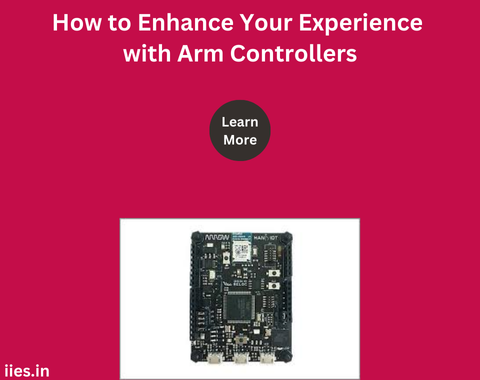
Arm controllers, central to robotics and various automated systems, are pivotal in ensuring the precise control and seamless operation of mechanical arms. From industrial automation to consumer electronics, arm controllers are integral to manipulating and controlling robotic movements with precision. While hardware capabilities play a critical role, the user experience is significantly influenced by how these controllers are configured, calibrated, and utilized. This article delves into the theoretical foundations of optimizing arm controllers to enhance user experience, focusing on key aspects like configuration, feedback systems, and user interface design.
At their core, arm controllers within embedded systems function by interpreting user inputs—often in the form of joystick movements, gestures, or command scripts—and translating these into precise movements of a robotic arm. The quality of this translation is contingent on several factors specific to embedded systems:
Resolution and Precision: The finer the resolution of the controller, the more precise the movements of the robotic arm. This directly impacts the ability to perform delicate tasks, such as in medical robotics or intricate manufacturing processes.
Response Time: A controller’s response time, or the lag between input and action, is critical. Lower response times lead to smoother operations and a more intuitive user experience.
Stability and Noise Reduction: Stability in signal processing ensures that the robotic arm’s movements are consistent and predictable, which is particularly important in environments where precision is paramount.
Optimal performance of arm controllers starts with proper configuration. This involves calibrating the controller to match the specific characteristics of the robotic arm it controls. Key considerations include:
Calibration: Proper calibration ensures that the controller’s movements correspond accurately to the arm’s movements. This involves setting the correct range of motion, sensitivity, and force feedback parameters.
Customization of Control Parameters: Users should have the flexibility to adjust control parameters such as speed, acceleration, and deceleration. This customization allows the controller to be tailored to the specific needs of the task at hand, whether it’s delicate handling or rapid movements.
Integration with Sensor Feedback: Modern arm controllers can integrate with a variety of sensors, including tactile, visual, and force sensors. This feedback allows for real-time adjustments to the controller’s operation, enhancing accuracy and user confidence.
The user interface (UI) of arm controllers is a critical component that directly influences the user experience. An intuitive and responsive UI can make complex tasks more manageable, while a poorly designed interface can lead to errors and frustration.
Simplified and Intuitive Layouts: The UI should present information in a clear and accessible manner, minimizing the cognitive load on the user. This includes using visual aids like diagrams and real-time feedback on the arm’s position and status.
Haptic Feedback: Incorporating haptic feedback can significantly enhance the user experience by providing tactile information about the arm’s interaction with objects. This is particularly useful in scenarios where visual feedback is limited.
Adaptive Control Schemes: The UI should offer adaptive control schemes that adjust to the user’s skill level. For beginners, this might mean simplified controls with more assistance, while advanced users might prefer more direct control over the arm’s movements.
The software that powers arm controllers plays a crucial role in defining their capabilities and user experience. Key aspects include:
Real-time Data Processing: The ability to process data in real-time ensures that the controller can respond instantly to user inputs and environmental changes.
Machine Learning Integration: Integrating machine learning algorithms allows the controller to learn from previous operations and improve its performance over time. This can lead to more intuitive controls and predictive capabilities.
Cross-Platform Compatibility: Ensuring that the controller’s software is compatible with various operating systems and devices enhances its versatility and user accessibility.
Enhancing the user experience with arm controllers requires a deep understanding of both the hardware and software components involved. By focusing on precise calibration, intuitive user interfaces, and leveraging advanced technologies like machine learning, users can achieve optimal control over robotic arms. As technology continues to evolve, the potential for further improving the performance and usability of arm controllers will expand, paving the way for more sophisticated and user-friendly robotic systems.
Indian Institute of Embedded Systems – IIES